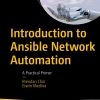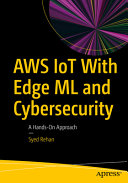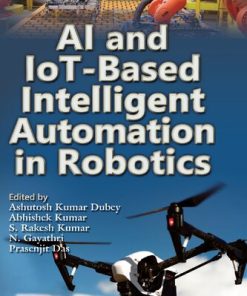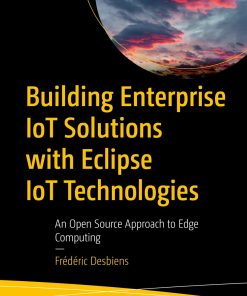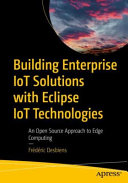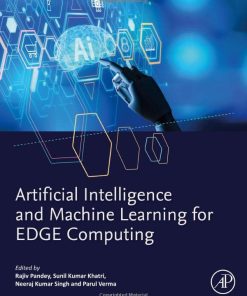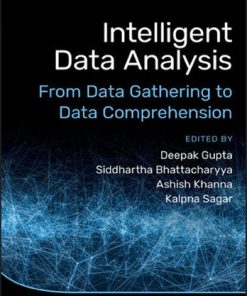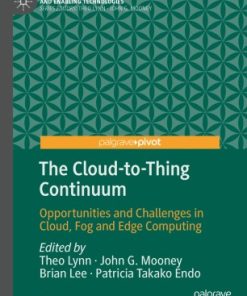Fog Edge and Pervasive Computing in Intelligent IoT Driven Applications 1st edition by Deepak Gupta 1119670100 9781119670100
$50.00 Original price was: $50.00.$25.00Current price is: $25.00.
Fog, Edge, and Pervasive Computing in Intelligent IoT Driven Applications 1st edition by Deepak Gupta – Ebook PDF Instant Download/DeliveryISBN: 1119670100, 9781119670100
Full download Fog, Edge, and Pervasive Computing in Intelligent IoT Driven Applications 1st edition after payment.
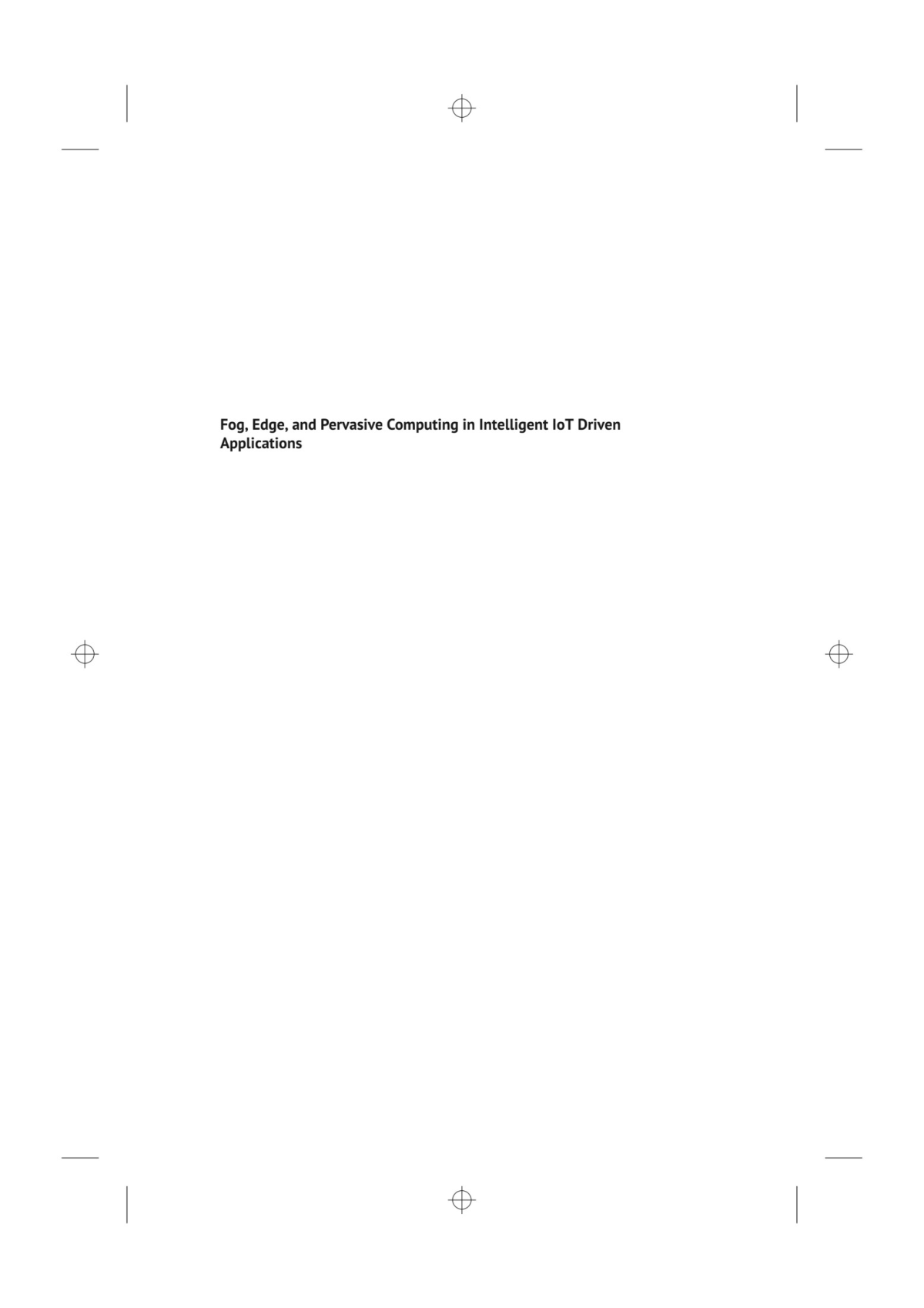
Product details:
ISBN-10 : 1119670100
ISBN-13 : 9781119670100
Author: Deepak Gupta
A practical guide to the design, implementation, evaluation, and deployment of emerging technologies for intelligent IoT applications With the rapid development in artificially intelligent and hybrid technologies, IoT, edge, fog-driven, and pervasive computing techniques are becoming important parts of our daily lives. This book focuses on recent advances, roles, and benefits of these technologies, describing the latest intelligent systems from a practical point of view. Fog, Edge, and Pervasive Computing in Intelligent IoT Driven Applications is also valuable for engineers and professionals trying to solve practical, economic, or technical problems. With a uniquely practical approach spanning multiple fields of interest, contributors cover theory, applications, and design methodologies for intelligent systems. These technologies are rapidly transforming engineering, industry, and agriculture by enabling real-time processing of data via computational, resource-oriented metaheuristics and machine learning algorithms. As edge/fog computing and associated technologies are implemented far and wide, we are now able to solve previously intractable problems. With chapters contributed by experts in the field, this book: Describes Machine Learning frameworks and algorithms for edge, fog, and pervasive computing Considers probabilistic storage systems and proven optimization techniques for intelligent IoT Covers 5G edge network slicing and virtual network systems that utilize new networking capacity Explores resource provisioning and bandwidth allocation for edge, fog, and pervasive mobile applications Presents emerging applications of intelligent IoT, including smart farming, factory automation, marketing automation, medical diagnosis, and more Researchers, graduate students, and practitioners working in the intelligent systems domain will appreciate this book’s practical orientation and comprehensive coverage. Intelligent IoT is revolutionizing every industry and field today, and Fog, Edge, and Pervasive Computing in Intelligent IoT Driven Applications provides the background, orientation, and inspiration needed to begin.
Fog, Edge, and Pervasive Computing in Intelligent IoT Driven Applications 1st Table of contents:
1 Fog, Edge and Pervasive Computing in Intelligent Internet of Things Driven Applications in Healthcare: Challenges, Limitations and Future Use
1.1 Introduction
1.2 Why Fog, Edge, and Pervasive Computing?
1.3 Technologies Related to Fog and Edge Computing
1.4 Concept of Intelligent IoT Application in Smart (Fog) Computing Era
1.5 The Hierarchical Architecture of Fog/Edge Computing
1.6 Applications of Fog, Edge and Pervasive Computing in IoT‐based Healthcare
1.7 Issues, Challenges, and Opportunity
1.8 Conclusion
Bibliography
Note
2 Future Opportunistic Fog/Edge Computational Models and their Limitations
2.1 Introduction
2.2 What are the Benefits of Edge and Fog Computing for the Mechanical Web of Things (IoT)?
2.3 Disadvantages
2.4 Challenges
2.5 Role in Health Care
2.6 Blockchain and Fog, Edge Computing
2.7 How Blockchain will Illuminate Human Services Issues
2.8 Uses of Blockchain in the Future
2.9 Uses of Blockchain in Health Care
2.10 Edge Computing Segmental Analysis:
2.11 Uses of Fog Computing
2.12 Analytics in Fog Computing
2.13 Conclusion
Bibliography
Note
3 Automating Elicitation Technique Selection using Machine Learning
3.1 Introduction
3.2 Related Work
3.3 Model: Requirement Elicitation Technique Selection Model
3.4 Analysis and Results
3.5 The Error Rate
3.6 Validation
3.7 Conclusion
Bibliography
Chapter 4: Machine Learning Frameworks and Algorithms for Fog and Edge Computing
4.1 Introduction
4.2 Overview of Machine Learning Frameworks for Fog and Edge Computing
Bibliography
Chapter 5: Integrated Cloud Based Library Management in Intelligent IoT driven Applications
5.1 Introduction
5.2 Understanding Library Management
5.3 Integration of Mobile Platform with the Physical Library‐ Brief Concept
5.4 Database (Cloud Based) ‐ A Must have Component for Library Automation
5.5 IoT Driven Mobile Based Library Management ‐ General Concept
5.6 IoT Involved Real Time GUI (Cross Platform) Available to User
5.7 IoT Challenges
5.8 Conclusion
Bibliography
Note
Chapter 6: A Systematic and Structured Review of Intelligent Systems for Diagnosis of Renal Cancer
6.1 Introduction
6.2 Related Works
6.3 Conclusion
Bibliography
Note
Chapter 7: Location Driven Edge Assisted Device and Solutions for Intelligent Transportation
7.1 Introduction to Fog and Edge Computing
7.2 Introduction to Transportation System
7.3 Route Finding Process
7.4 Edge Architecture for Route Finding
7.5 Technique Used
7.6 Algorithms Used for the Location Identification and Route Finding Process
7.7 Results and Discussions
7.8 Conclusion
Bibliography
Note
Chapter 8: Design and Simulation of MEMS for Automobile Condition Monitoring Using COMSOL Multiphysics Simulator
8.1 Introduction
8.2 Related Work
8.3 Vehicle Condition Monitoring through Acoustic Emission
8.4 Piezo‐resistive Micro Electromechanical Sensors for Monitoring the Faults Through AE
8.5 Designing of MEM Sensor
8.6 Experimental Setup:
8.7 Result and Discussions
8.8 Conclusion
Bibliography
Note
Chapter 9: IoT Driven Healthcare Monitoring System
9.1 Introduction
9.2 General Concept for IoT Based Healthcare System
9.3 View of the Overall IoT Healthcare System‐ Tiers Explained
9.4 A Brief Design of the IoT Healthcare Architecture‐individual Block Explanation
9.5 Models/Frameworks for IoT use in Healthcare
9.6 IoT e‐Health System Model
9.7 Process Flow for the Overall Model
9.8 Conclusion
Bibliography
Note
Chapter 10: Fog Computing as Future Perspective in Vehicular Ad hoc Networks
10.1 Introduction
10.2 Future VANET: Primary Issues and Specifications
10.3 Fog Computing
10.4 Related Works in Cloud and Fog Computing
10.5 Fog and Cloud Computing‐based Technology Applications in VANET
10.6 Challenges of Fog Computing in VANET
10.7 Issues of Fog Computing in VANET
10.8 Conclusion
Bibliography
Chapter 11: An Overview to Design an Efficient and Secure Fog‐assisted Data Collection Method in the Internet of Things
11.1 Introduction
11.2 Related Works
11.3 Overview of the Chapter
11.4 Data Collection in the IoT
11.5 Fog Computing
11.6 Requirements for Designing a Data Collection Method
11.7 Conclusion
Bibliography
Note
Chapter 12: Role of Fog Computing Platform in Analytics of Internet of Things‐ Issues, Challenges and Opportunities
12.1 Introduction to Fog Computing
12.2 Introduction to Internet of Things
12.3 Conceptual Architecture of Internet of Things
12.4 Relationship between Internet of Things and Fog Computing
12.5 Use of Fog Analytics in Internet of Things
12.6 Conclusion
Bibliography
Note
Chapter 13: A Medical Diagnosis of Urethral Stricture Using Intuitionistic Fuzzy Sets
13.1 Introduction
13.2 Preliminaries
13.3 Max‐Min‐Max Algorithm for Disease Diagnosis
13.4 Case Study
13.5 Intuitionistic Fuzzy Max‐Min Average Algorithm for Disease Diagnosis
13.6 Result
13.7 Code for Calculation
13.8 Conclusion
13.9 Acknowledgement
Bibliography
Chapter 14: Security Attacks in Internet of Things
14.1 Introduction
14.2 Reference Model of Internet of Things (IoT)
14.3 IoT Communication Protocol
14.4 IoT Security
14.5 Security Challenges in IoT
14.6 Conclusion
Bibliography
Note
Chapter 15: Fog Integrated Novel Architecture for Telehealth Services with Swift Medical Delivery
15.1 Introduction
15.2 Associated Work and Dimensions
15.3 Need of Security in Telemedicine Domain and Internet of Things (IoT)
15.4 Fog Integrated Architecture for Telehealth Delivery
15.5 Research Dimensions
15.6 Research Methodology and Implementation on Software Defined Networking
15.7 Conclusion
Bibliography
Chapter 16: Fruit Fly Optimization Algorithm for Intelligent IoT Applications
16.1 An Introduction to the Internet of Things
16.2 Background of the IoT
16.3 Applications of the IoT
16.4 Challenges in the IoT
16.5 Introduction to Optimization
16.6 Classification of Optimization Algorithms
16.7 Network Optimization and IoT
16.8 Network Parameters optimized by Different Optimization Algorithms
16.9 Fruit Fly Optimization Algorithm
16.10 Applicability of FOA in IoT Applications
16.11 Node Deployment Using Fruit Fly Optimization Algorithm
16.12 Conclusion
Bibliography
Chapter 17: Optimization Techniques for Intelligent IoT Applications
17.1 Cuckoo Search
17.2 Glow Worm Algorithm
17.3 Wasp Swarm Optimization
17.4 Real World Applications Area
Summary
Bibliography
Chapter 18: Optimization Techniques for Intelligent IoT Applications in Transport Processes
18.1 Introduction
18.2 Related Works
18.3 TSP Optimization Techniques
18.4 Implementation and Testing of Proposed Solution
18.5 Experimental Results
18.6 Conclusion and Further Works
Bibliography
Chapter 19: Role of Intelligent IOT Applications in Fog paradigm: Issues, Challenges and Future Opportunities
19.1 Fog Computing
19.2 Concept of Intelligent IoT Applications in Smart Computing Era
19.3 Components of Edge and Fog Driven Algorithm
19.4 Working of Edge and Fog Driven Algorithms
19.5 Future Opportunistic Fog/Edge Computational Models
19.6 Challenges of Fog Computing for Intelligent IoT Applications
19.7 Applications of Cloud Based Computing for Smart Devices
Bibliography
Note
Chapter 20: Security and Privacy Issues in Fog/Edge/Pervasive Computing
20.1 Introduction to Data Security and Privacy in Fog Computing
20.2 Data Protection/ Security
20.3 Great Security Practices In Fog Processing Condition
20.4 Developing Patterns in Security and Privacy
20.5 Conclusion
Bibliography
Note
Chapter 21: Fog and Edge Driven Security & Privacy Issues in IoT Devices
21.1 Introduction to Fog Computing
21.2 Introduction to Edge Computing
People also search for Fog, Edge, and Pervasive Computing in Intelligent IoT Driven Applications 1st:
fog/edge computing
fog computing vs edge computing
fog and edge computing needs statement
edge/fog computing
edge and fog computing examples
Tags: Fog, Edge, Pervasive Computing, Intelligent, Driven Applications, Deepak Gupta
You may also like…
Computers - Security
Computers - Security
AWS IoT With Edge ML and Cybersecurity: A Hands-On Approach 1st Edition Syed 9798868800115
Computers - Enterprise Computing Systems
Computers - Enterprise Computing Systems
Business & Economics
Computers - Computers - General & Miscellaneous



